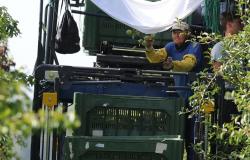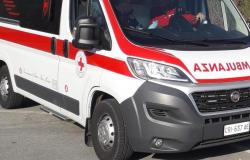In the conference room of the “Antonio De Nino” civic archaeological museum of Corfinio, an important meeting took place entitled “Archaeological research in Corfinio”, organized on the occasion of the European Archeology Days (GEA) 2024. This event represented a opportunity to highlight some of the most significant results of recent archaeological research in the Peligno centre.
The meeting, organized by the Municipality of Corfinio in collaboration with the University of Salento and the Archaeological, Fine Arts and Landscape Superintendency for the provinces of L’Aquila and Teramo, saw the participation of illustrious scholars from the university and institutional world. Among these, Elena Cagiano de Azevedo, official of the General Directorate of Museums of the MIC and national coordinator of the European Archeology Days, recalled how the Ministry of Culture has been promoting these days on an annual basis since 2019 to raise public awareness on the topics of knowledge , protection and use of the archaeological heritage.
The meeting highlighted a growing interest in these themes also in Abruzzo, as demonstrated by the large participation and interventions of the various speakers. Gianluca Tagliamonte, professor at the University of Salento and scientific director of the “Antonio De Nino” Civic Archaeological Museum, presented an unpublished funerary inscription in the Peligna language from the Bagnaturo countryside, which mentions a member of the local Decrii family. Giuseppe Ceraudo, also a professor at the University of Salento, illustrated the great potential of archaeological research on ancient Corfinio.
Maria Carla Somma, Sonia Antonelli and Vasco La Salvia, professors at the “G. D’Annunzio” of Chieti-Pescara, have explored the settlement development of the ancient center in the period between the establishment of the Roman municipality and the erection of the Valvalense complex, with a particular focus on the figure of San Pelino, whose cult is limited in Brindisi and Corfinio. Massimo Valenti, professor at the University of Tuscia, analyzed the characteristics of the Roman city, focusing on the theater and comparing it with similar buildings of ancient Abruzzo, such as those of Amiternum, Iuvanum, Peltuinum and Teate.
The meeting ended with the speech of Chiara Casolino, professor at the “G. D’Annunzio”, who discussed the Lombard presence in Corfinio, showing peculiar indicators of the production of mold-decorated ceramics found at the cathedral of San Pelino.
Numerous points for reflection emerged during the event, which as underlined by the mayor of Corfinio Romeo Contestabile and the deputy mayor Francesco Di Nisio, will be the subject of future in-depth analysis. Archaeological research in Corfinio not only contributes to knowledge of the past, but also represents a fundamental resource for the future of the territory, drawing attention to a cultural heritage of inestimable value.
Post Views: 71






